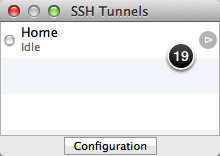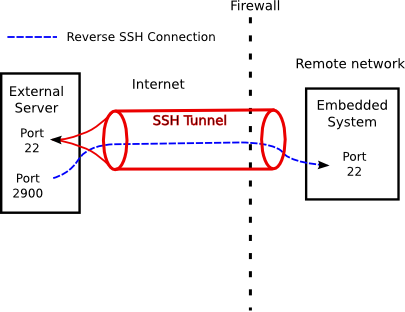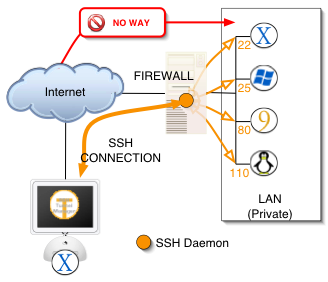
Reverse SSH TunnelĪ firewall on a router denies all connection requests or transfer requests that have no outgoing requests from reaching a remote machine. Hence, it is essential for tunneling techniques to provide both secure remote access and control and security over the accessed network. For instance, together with unmanaged SSH keys, SSH tunneling enables attackers to use stolen SSH keys for a private network from the public channels.Īccording to SSH Academy, these attacks can act as hideouts for the source of attack when hackers redirect attacks from systems and devices, In turn, the attackers can search for and exploit vulnerabilities without being detected.Īmong the frequently carried out malicious activities are trying various log-in credentials and running attack tools against email and web protocol. Maliciously obtained SSH keys have also been in use for network attacks. The SSH protocol is susceptible to various malware to hide data breaches and attack sources channels. However, the standard SOCKS port is 1080, and some programs may not work if other ports are in use.

You can also use any number for the connection. As a result, all the proxy server’s programs require configuration and reconfiguration when you are through with it.Īs shown below, use the -D option to specify a dynamic port forwarding. This SSH tunneling makes a client a SOCKS proxy server. Remote forwarding is useful when someone outside an organization needs to access an internal web server or when there is a need to avail an internal web application to the public internet. SSH -R 5900:localhost:5900 -R option determines the remote port forwarding, allowing Jane to access your laptop (localhost) by connecting a VNC client to port 5900. To do so, type the following command in your terminal: Unlike local port forwarding, remote port forwarding allows you to connect from a remote SSH server to remote network service located at the tunnel’s client side. Even so, port numbers that are less than 1024 or greater than 49151 are reserved for the system and can only work with specific source ports. You can use any source port number (see Wikipedia’s list of TCP and UDP port numbers). Where you replace with your laptop’s name and the -L option specifies local port forwarding. For instance, if you want remote access to your SSH tunnel would be: However, you need to know two port numbers and your destination server. This connection enables you to access another server from your local computer. There are three types of port forwarding: Because of its encrypted nature, you can use SHH tunneling to transmit messages that use unencrypted protocols such as IMAP, VNC, or IRC. On the other hand, SSH tunneling/port forwarding is a mechanism that creates a secure SSH connection between a local and remote computer. SSH is the cryptographic network protocol that runs on port 22 and allows you to connect to the shell of a remote machine. Specifically, the article introduces the concept of SSH tunneling, which includes its definition, use, and disadvantages before transitioning to reverse SSH tunneling. This article provides a step-by-step guide for setting up and using reverse SSH tunneling in Linux-based environments. For this reason, both corporations and individuals have exploited various localization techniques that are available to them.


The occurrence of the ongoing Covid-19 pandemic has highlighted the necessity for remote access as businesses have had to decentralize their operations and adapt to remote working environments.
Howto setup ssh tunnel full#
Reverse SSH Tunneling – From Start to EndĪs access to machines becomes increasingly essential in business, especially with the rise of cloud applications, users have become accustomed to having full or limited remote access, making access machines remotely absolutely necessary.


 0 kommentar(er)
0 kommentar(er)
